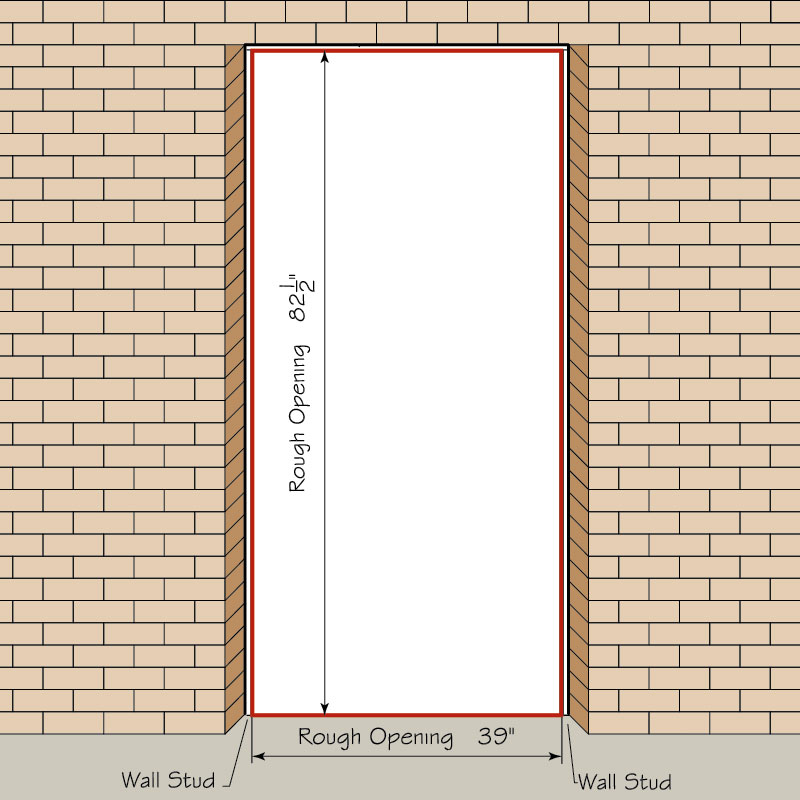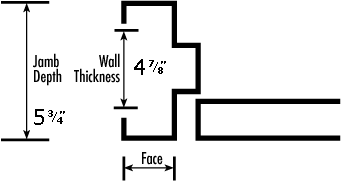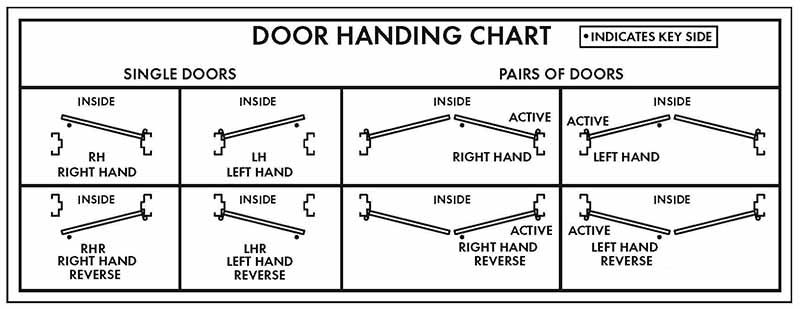|
What exactly is a rough opening?
In a block opening it would be from brick to brick on the inside of the walls for width and from the floor to the bottom of the top bricks. In a dry wall opening it would be stud to stud for the width and floor to the header for the height.

What is the frame jamb depth?
The measurement across the depth of the jamb.

How to figure out the handing of the door

How do I know which type hinge to use?
For Standard door applications either interior or exterior, standard butt hinges cover most applications.
A Continuous hinge (Full length or also known as a “piano hinge”) is best suited for functionality of heavier doors, high traffic doors or replacing just the door on an already existing frame that has different hinge locations.
How do I know the best lock option to use?
This mostly depends on the level of security needed or desired, emergency egress codes, and whether the lock is going on an interior or exterior door.
How do I choose the best closer option for my application?
The Volume of usage the closer will endure a day and the weight & size of the door determine the type of closer needed.
How to determine your misc. hardware needs.
Latch guard is for added security purposes.
Drip guard prevents water getting on the face of the door.
Wall stops prevents the door from damaging the wall that the door swings towards.
Kick plates are for doors where is someone is walking with their hands full often, pushing carts or another reason they would kick the door vs use handle.
Weather stripping is for exterior doors to prevent drafts or unwanted weather from getting in and for temperature controlled facilities.
Threshold measurements:
W= The desired thickness of the threshold
L= The distance between the jambs
H= The desired height coming off the ground no greater that ¾”(anything higher then becomes a trip hazard.
|